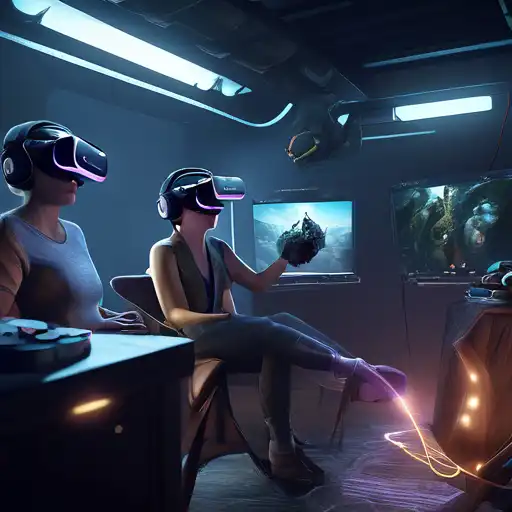Introduction to Virtual Reality
Virtual Reality (VR) has transformed the way we interact with digital content, offering unparalleled immersive experiences. From gaming to education, VR's applications are vast and varied. This guide will walk you through the essentials of creating captivating VR experiences that engage and astonish users.
Understanding VR Technology
Before diving into VR development, it's crucial to understand the technology behind it. VR relies on headsets, motion tracking, and immersive audio to create a sense of presence in a virtual world. Familiarizing yourself with these components is the first step toward mastering VR creation.
Designing for Immersion
Immersion is the cornerstone of any successful VR experience. To achieve this, focus on detailed environments, intuitive interactions, and responsive feedback. Remember, the goal is to make users forget they're in a virtual space.
Key Elements of Immersive Design
- High-quality graphics and textures
- Realistic physics and interactions
- Dynamic lighting and shadows
- 3D spatial audio
Choosing the Right Tools
Selecting the appropriate development tools is critical. Popular options include Unity and Unreal Engine, both offering robust support for VR projects. Consider your project's requirements and your team's expertise when making your choice.
Optimizing Performance
VR applications demand high performance to prevent motion sickness and ensure a smooth experience. Optimize your assets, reduce polygon counts, and implement efficient coding practices to maintain high frame rates.
Testing and Iteration
Testing is an ongoing process in VR development. Gather feedback from users to identify areas for improvement. Iteration is key to refining the experience and achieving the desired level of immersion.
Future Trends in VR
The VR landscape is constantly evolving, with advancements in haptic feedback, eye-tracking, and wireless technology shaping the future of immersive experiences. Staying abreast of these trends will ensure your projects remain at the cutting edge.
Creating immersive VR experiences is a challenging yet rewarding endeavor. By understanding the technology, focusing on immersive design, and leveraging the right tools, you can craft virtual worlds that captivate and engage. For more insights into VR development, explore our VR development resources.
